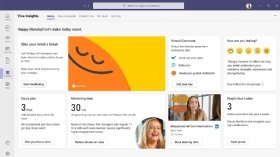
Getty Images
Video conferencing vendors rush to fix meeting fatigue
Video conferencing vendors tackle video fatigue with tools to mitigate the stress caused by the overuse of their products. Experts advise using multiple means of communication.
Video conferencing soared during the pandemic, when in-office meetings weren't possible. Zoom, Microsoft and other tech vendors benefited tremendously from the sudden shift, as usage of their online video platforms grew by triple digits.
Unfortunately, the welcomed solution to an immediate problem gave birth to a new tech-related phenomenon: video fatigue. Companies discovered that simply transferring what would have been in-person meetings to the virtual world exhausted employees.
A survey of office workers from staffing firm Robert Half found that 44% of respondents had experienced video conference fatigue since the pandemic began. Even Zoom CEO Eric Yuan admitted earlier this year to feeling tired after a series of video meetings.
The unexpected consequences from the overuse of their technologies sent vendors scrambling to temper the meteoric use of their platforms that burned out employees and reduced their productivity. The companies have introduced features to encourage breaks, make video conferencing more engaging and lessen the pressure to attend every meeting.
The Greater Good Science Center at the University of California, Berkeley, found that not addressing the problem would make video meetings harder on a company's employees than in-person meetings.
"Over time, it is just more taxing than having casual, face-to-face interactions," said Emiliana Simon-Thomas, science director of the Greater Good Science Center.
Microsoft, Zoom and other vendors have tackled video fatigue by preventing over-scheduling and the feeling of disconnection their technology can cause.

Microsoft Teams and Zoom have modes that put all meeting participants in the same virtual space to bolster feelings of togetherness. Transcription and meeting recordings have become standard features, so employees feel less pressure to attend every session.
Since April, Microsoft has allowed businesses to schedule shorter meetings by default in Outlook and create breaks between sessions. Metrigy analyst Irwin Lazar said he expects more vendors will alert users about avoiding back-to-back meetings.
Slack and project management company Asana introduced video-messaging features in June, allowing employees to record a message available to their coworkers on demand. Workers can review the messages anytime, freeing them from the pressures of real-time communication.
"We call meetings because we want to convey emotion, we want to show supporting materials [and] we want to walk through things. That doesn't need to be done synchronously," said Alex Hood, chief product officer at Asana.
Salvation from video conferencing exhaustion may come gradually, as workers and employers adjust to remote work. Teams could rely less on video meetings if given a better understanding of the appropriate communication tool to use in different situations.
Simon-Thomas said that sometimes an email or phone call is a better way to reach a coworker. Companies could reserve video conferencing for real-time collaboration like brainstorming or emotionally charged conversations, she said. The latter often requires body language and facial expressions to foster conflict resolution and understanding.
Microsoft-owned GitHub, whose workforce was more than 70% remote before the pandemic, has more than a decade's worth of experience in managing communications with out-of-the-office employees. Lara Owen, GitHub's senior director of workplace experience, said it's vital that video meetings are only one of the multiple ways to communicate.
No form of communication is perfect, Owen said. Email, text messaging and phone calls also have unique strengths and weaknesses.
"Written communications can lose tone and context, which can sometimes lead to misunderstandings," she said. However, verbal cues, tangential topics and humor expressed in a phone call "can add insightful context to communications, in addition to building trust and rapport between team members."
Being flexible with different means of communication has helped GitHub employees better integrate work into their daily lives, Owen said.
"Smart leaders are embracing the long-term value of providing flexibility in working environments, and those are the companies that will see the most success," she said.
While technology alone will not end video conferencing fatigue, it could play a role in easing exhaustion. Wellness features work best when they encourage employees to be mindful of their time and suggest measures like breaks between meetings, Simon-Thomas said.
"To notice [the problem], ask about it, and have a design sensibility around it is very valuable," she said.
Mike Gleason is a reporter covering unified communications and collaboration tools. He previously covered communities in the MetroWest region of Massachusetts for the Milford Daily News, Walpole Times, Sharon Advocate and Medfield Press. He has also worked for newspapers in central Massachusetts and southwestern Vermont and served as a local editor for Patch. He can be found on Twitter at @MGleason_TT.








